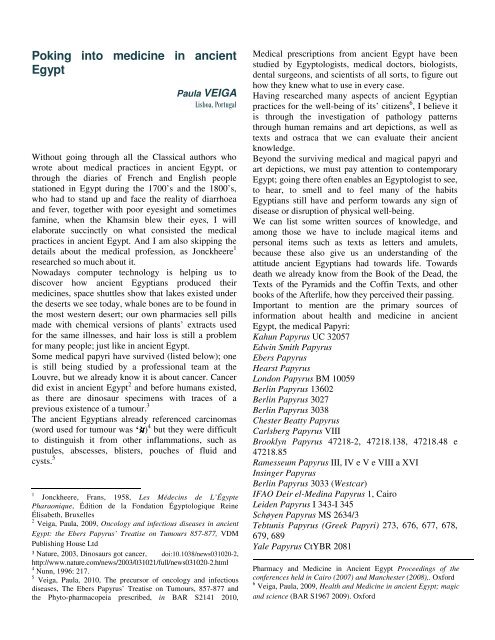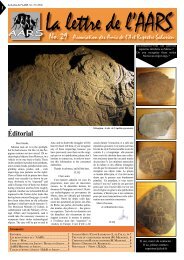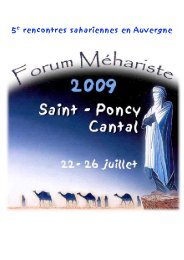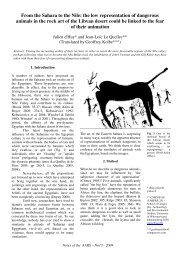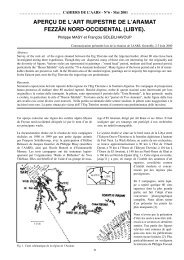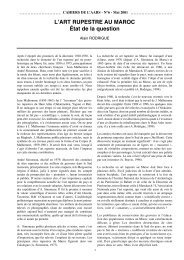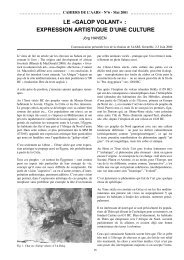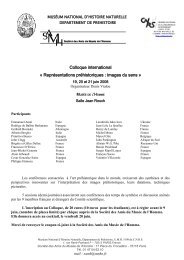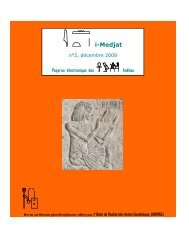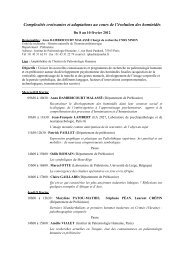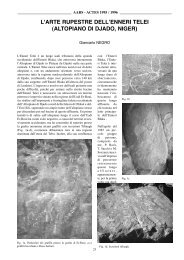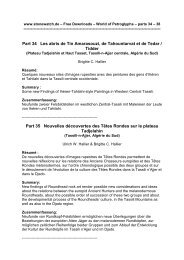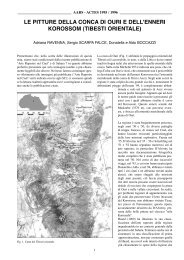i-Medjat - Culture Diff
i-Medjat - Culture Diff
i-Medjat - Culture Diff
You also want an ePaper? Increase the reach of your titles
YUMPU automatically turns print PDFs into web optimized ePapers that Google loves.
Poking into medicine in ancient<br />
Egypt<br />
Paula VEIGA<br />
Lisboa, Portugal<br />
Without going through all the Classical authors who<br />
wrote about medical practices in ancient Egypt, or<br />
through the diaries of French and English people<br />
stationed in Egypt during the 1700’s and the 1800’s,<br />
who had to stand up and face the reality of diarrhoea<br />
and fever, together with poor eyesight and sometimes<br />
famine, when the Khamsin blew their eyes, I will<br />
elaborate succinctly on what consisted the medical<br />
practices in ancient Egypt. And I am also skipping the<br />
details about the medical profession, as Jonckheere 1<br />
researched so much about it.<br />
Nowadays computer technology is helping us to<br />
discover how ancient Egyptians produced their<br />
medicines, space shuttles show that lakes existed under<br />
the deserts we see today, whale bones are to be found in<br />
the most western desert; our own pharmacies sell pills<br />
made with chemical versions of plants’ extracts used<br />
for the same illnesses, and hair loss is still a problem<br />
for many people; just like in ancient Egypt.<br />
Some medical papyri have survived (listed below); one<br />
is still being studied by a professional team at the<br />
Louvre, but we already know it is about cancer. Cancer<br />
did exist in ancient Egypt 2 and before humans existed,<br />
as there are dinosaur specimens with traces of a<br />
previous existence of a tumour. 3<br />
The ancient Egyptians already referenced carcinomas<br />
(word used for tumour was ‘At At At) At<br />
4 but they were difficult<br />
to distinguish it from other inflammations, such as<br />
pustules, abscesses, blisters, pouches of fluid and<br />
cysts. 5<br />
1 Jonckheere, Frans, 1958, Les Médecins de L’Égypte<br />
Pharaonique, Édition de la Fondation Égyptologique Reine<br />
Élisabeth, Bruxelles<br />
2 Veiga, Paula, 2009, Oncology and infectious diseases in ancient<br />
Egypt: the Ebers Papyrus’ Treatise on Tumours 857-877, VDM<br />
Publishing House Ltd<br />
3 Nature, 2003, Dinosaurs got cancer, doi:10.1038/news031020-2,<br />
http://www.nature.com/news/2003/031021/full/news031020-2.html<br />
4 Nunn, 1996: 217.<br />
5 Veiga, Paula, 2010, The precursor of oncology and infectious<br />
diseases, The Ebers Papyrus’ Treatise on Tumours, 857-877 and<br />
the Phyto-pharmacopeia prescribed, in BAR S2141 2010,<br />
Medical prescriptions from ancient Egypt have been<br />
studied by Egyptologists, medical doctors, biologists,<br />
dental surgeons, and scientists of all sorts, to figure out<br />
how they knew what to use in every case.<br />
Having researched many aspects of ancient Egyptian<br />
practices for the well-being of its’ citizens 6 , I believe it<br />
is through the investigation of pathology patterns<br />
through human remains and art depictions, as well as<br />
texts and ostraca that we can evaluate their ancient<br />
knowledge.<br />
Beyond the surviving medical and magical papyri and<br />
art depictions, we must pay attention to contemporary<br />
Egypt; going there often enables an Egyptologist to see,<br />
to hear, to smell and to feel many of the habits<br />
Egyptians still have and perform towards any sign of<br />
disease or disruption of physical well-being.<br />
We can list some written sources of knowledge, and<br />
among those we have to include magical items and<br />
personal items such as texts as letters and amulets,<br />
because these also give us an understanding of the<br />
attitude ancient Egyptians had towards life. Towards<br />
death we already know from the Book of the Dead, the<br />
Texts of the Pyramids and the Coffin Texts, and other<br />
books of the Afterlife, how they perceived their passing.<br />
Important to mention are the primary sources of<br />
information about health and medicine in ancient<br />
Egypt, the medical Papyri:<br />
Kahun Papyrus UC 32057<br />
Edwin Smith Papyrus<br />
Ebers Papyrus<br />
Hearst Papyrus<br />
London Papyrus BM 10059<br />
Berlin Papyrus 13602<br />
Berlin Papyrus 3027<br />
Berlin Papyrus 3038<br />
Chester Beatty Papyrus<br />
Carlsberg Papyrus VIII<br />
Brooklyn Papyrus 47218-2, 47218.138, 47218.48 e<br />
47218.85<br />
Ramesseum Papyrus III, IV e V e VIII a XVI<br />
Insinger Papyrus<br />
Berlin Papyrus 3033 (Westcar)<br />
IFAO Deir el-Medina Papyrus 1, Cairo<br />
Leiden Papyrus I 343-I 345<br />
Schøyen Papyrus MS 2634/3<br />
Tebtunis Papyrus (Greek Papyri) 273, 676, 677, 678,<br />
679, 689<br />
Yale Papyrus CtYBR 2081<br />
Pharmacy and Medicine in Ancient Egypt Proceedings of the<br />
conferences held in Cairo (2007) and Manchester (2008),. Oxford<br />
6 Veiga, Paula, 2009, Health and Medicine in ancient Egypt; magic<br />
and science (BAR S1967 2009). Oxford


